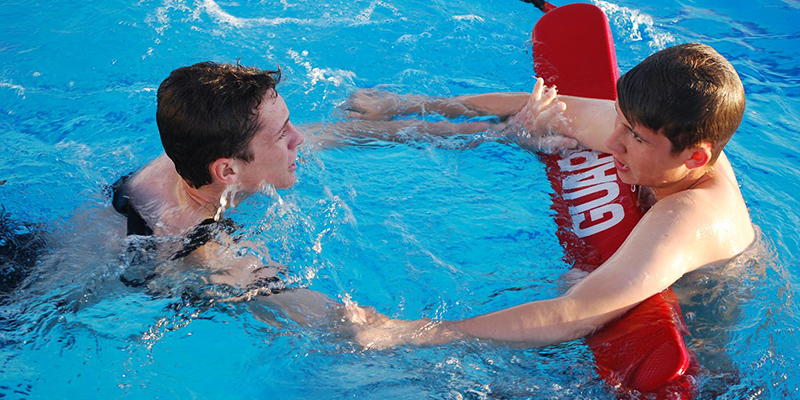Lifeguarding is a highly demanding job that requires a high level of technical skills and knowledge. It is not only about keeping an eye on swimmers and preventing accidents from happening but also about responding effectively to emergency situations, such as drowning, cardiac arrest, and spinal injuries.
In this article, we will explore the technical aspects of lifeguarding, including the training, certification, and classes that are required to become a lifeguard.
Table of Contents
Lifeguard Training
Lifeguard training is a crucial aspect of becoming a qualified lifeguard. It involves a combination of classroom learning and practical skills. The aim of the training is to equip individuals with the knowledge and skills to respond effectively to emergency situations.
Lifeguard training covers various topics, including water rescue techniques, first aid, CPR, AED use, and risk management. Individuals learn how to identify potential hazards in aquatic environments, how to recognize the signs of drowning, and how to communicate effectively with other lifeguards and emergency services.
Water Rescue Techniques
Water rescue techniques are a vital part of lifeguard training. Individuals learn different types of rescues, such as a front crawl rescue or a backstroke rescue, as well as the use of rescue equipment like tubes, fins, and rescue boards. Lifeguards need to be skilled in these techniques to ensure the safety of swimmers and other individuals in the water.
In addition to water rescue techniques, lifeguard training also covers first aid and CPR. These skills are essential for responding to medical emergencies and saving lives. Lifeguards learn how to assess a victim’s condition, perform basic life support, and use an automated external defibrillator (AED).
Risk Management
Risk management is another crucial component of lifeguard training. Lifeguards learn how to identify potential hazards and take preventive measures to minimize risks. They also learn how to communicate effectively with other lifeguards and emergency services, including relaying critical information about the victim’s condition.
Lifeguard Certification
Lifeguard certification is necessary for individuals who want to work as a lifeguard. The certification process typically involves passing a written exam and a practical skills test. The exams assess individuals’ knowledge of lifeguarding procedures and their ability to respond to emergency situations effectively.
To become certified, individuals must attend lifeguard classes that meet the requirements of the certifying agency, such as the American Lifeguard Association. The classes usually involve both classroom learning and practical skills training. Upon successful completion of the certification process, individuals receive a lifeguard certification card, which is valid for a specified period.
Lifeguard certification is not a one-time event. Lifeguards are required to renew their certification periodically, usually every one to two years, to ensure that they are up to date with the latest techniques and procedures. This requirement helps to maintain the quality of lifeguard services and ensure the safety of swimmers.
Learning and Practical Skills Training
The classes typically include both classroom learning and practical skills training. In the classroom, individuals learn about water safety, rescue techniques, first aid, and risk management. In the practical skills training, individuals practice the skills they have learned in the classroom, including rescue techniques and CPR.
Lifeguard classes are available for individuals of all ages and skill levels. Some organizations offer specialized classes for individuals who want to work as beach lifeguards, pool lifeguards, or water park lifeguards.
In addition to lifeguard classes, some organizations also offer lifeguard instructor courses. These courses provide individuals with the skills and knowledge required to train and certify new lifeguards.
The Necessity of Lifeguard Certification
Lifeguard certification is necessary for individuals who want to work as a lifeguard. The certification process involves passing a written exam and a practical skills test. Individuals must attend lifeguard classes that meet the requirements of the certifying agency, such as the American Lifeguard Association.

Lifeguard classes are designed to provide individuals with the knowledge and skills required to become a certified lifeguard. These classes are available for individuals of all ages and skill levels and include both classroom learning and practical skills training.
In addition to lifeguard classes, some organizations also offer lifeguard instructor courses. These courses provide individuals with the skills and knowledge required to train and certify new lifeguards.
Overall, lifeguarding is a challenging but rewarding job that requires a high level of technical expertise. By completing lifeguard training, certification, and classes, individuals can become competent and effective lifeguards, ensuring the safety of swimmers and other individuals in aquatic environments.
Conclusion
The American Lifeguard Association recognizes lifeguarding as a rigorous and demanding profession that necessitates a high level of expertise and ability. The technical facets of lifeguarding entail receiving proper lifeguard instruction, gaining certification, and attending lifeguard courses.
Lifeguard courses are open to people of all ages and abilities, offering them the opportunity to acquire the necessary knowledge and skills to become a certified lifeguard. By attending these courses and obtaining certification from the American Lifeguard Association, individuals can make a significant contribution to promoting water safety and saving lives in emergency situations.

